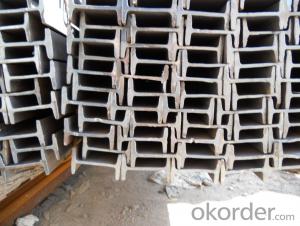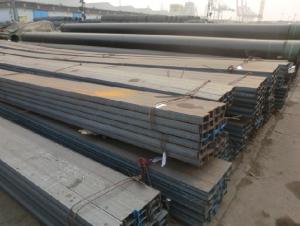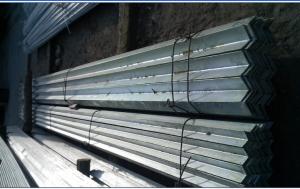European Standard IPE100/IPE120 with High Quality
- Loading Port:
- Tianjin
- Payment Terms:
- TT or LC
- Min Order Qty:
- 25 m.t
- Supply Capability:
- 15000 m.t/month
OKorder Service Pledge
OKorder Financial Service
You Might Also Like
Product Description of European Standard IPE100/IPE120 with High Quality:
Specifications of European Standard IPE100/IPE120 with High Quality:
1.Standard: EN10025
2.Material: S235JR or Equivalent
3.Length: 6m, 12m
4. Size:
| Size(mm) | Mass(Kg/m) |
| 100*55*4.1 | 8.10 |
| 120*64*4.8 | 10.40 |
Usage & Applications of European Standard IPE100/IPE120 with High Quality:
Commercial building structure;
Pre-engineered buildings;
Machinery support structures;
Prefabricated structure;
Medium scale bridges.
Packaging & Delivery of European Standard IPE100/IPE120 with High Quality:
1. Transportation: the goods are delivered by truck from mill to loading port, the maximum quantity can be loaded is around 40MTs by each truck. If the order quantity cannot reach the full truck loaded, the transportation cost per ton will be little higher than full load.
2. With bundles and load in 20 feet/40 feet container, or by bulk cargo, also we could do as customer's request.
3. Marks:
Color mark: There will be color marking on both end of the bundle for the cargo delivered by bulk vessel. That makes it easily to distinguish at the destination port.
Tag mark: There will be tag mark tied up on the bundles. The information usually including supplier logo and name, product name, made in China, shipping marks and other information request by the customer.
If loading by container the marking is not needed, but we will prepare it as customer's request.
FAQ:
Q1: Why buy Materials & Equipment from OKorder.com?
A1: All products offered byOKorder.com are carefully selected from China's most reliable manufacturing enterprises. Through its ISO certifications, OKorder.com adheres to the highest standards and a commitment to supply chain safety and customer satisfaction.
Q2: How do we guarantee the quality of our products?
A2: We have established an advanced quality management system which conducts strict quality tests at every step, from raw materials to the final product. At the same time, we provide extensive follow-up service assurances as required.
Q3: How soon can we receive the product after purchase?
A3: When we receive the advance payment or original LC, we will arrange production. The shipping date is dependent upon the quatity, how many sizes you want and the plan of production, but is typically 1 month to 2 month days from the beginning of production.
Images of European Standard IPE100/IPE120 with High Quality:
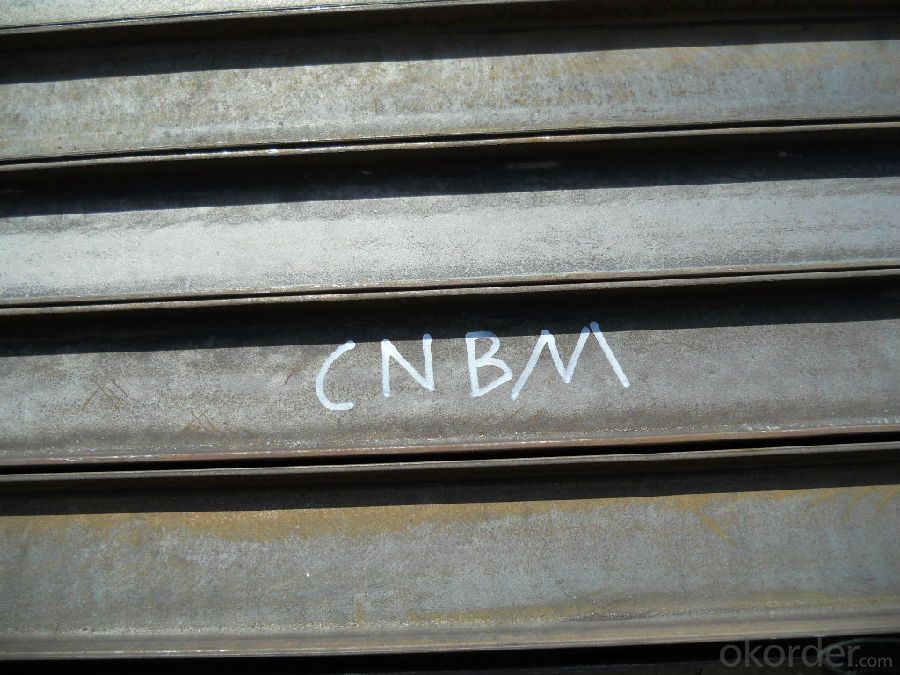
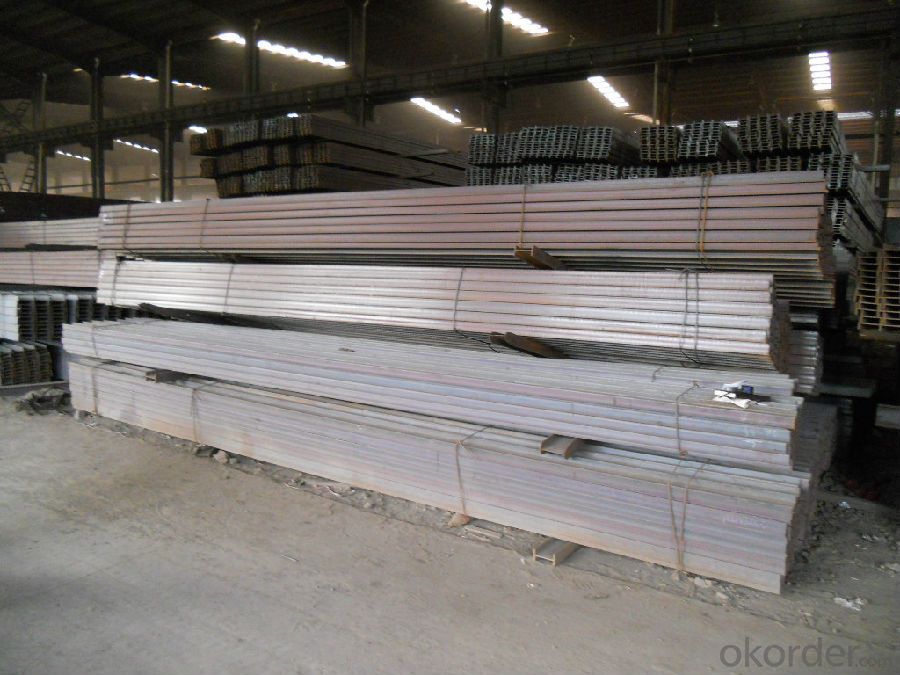
*If you would like to get our price, please inform us the size, standard/material and quantity. Thank you very much for your attention.
- Q:How do you determine the appropriate size and shape of a steel I-beam for a specific application?
- To determine the appropriate size and shape of a steel I-beam for a specific application, several factors need to be considered. These include the load that the beam will be supporting, the span or distance between supports, and the structural requirements such as deflection limits and safety factors. Additionally, engineers often refer to structural design codes and guidelines, which provide standardized formulas and tables for selecting the appropriate beam size based on these factors. By analyzing the specific application requirements and consulting relevant resources, engineers can determine the most suitable size and shape of a steel I-beam.
- Q:How do steel I-beams perform in areas with high pollution or chemical exposure?
- Steel I-beams are known for their durability and strength, making them a popular choice for construction projects in various environments. However, in areas with high pollution or chemical exposure, the performance of steel I-beams can be significantly affected. High pollution levels, such as airborne pollutants or corrosive gases, can cause corrosion and degradation of the steel surface. If left untreated, this corrosion can weaken the structural integrity of the I-beams over time. Additionally, chemical exposure, especially to acids or other corrosive substances, can accelerate the corrosion process and further compromise the strength of the steel. To mitigate the impact of high pollution or chemical exposure, several measures can be taken. One common approach is to apply protective coatings to the surface of the I-beams. These coatings act as a barrier, preventing direct contact between the steel and the pollutants or chemicals. Additionally, these coatings can provide resistance against corrosion and extend the lifespan of the I-beams. Another approach is to use stainless steel I-beams, which contain a higher amount of chromium and nickel. This composition makes stainless steel highly resistant to corrosion and chemical exposure. Although stainless steel I-beams are more expensive than regular steel, they are a worthwhile investment in areas with high pollution or chemical exposure. Regular maintenance and cleaning are also essential to ensure the long-term performance of steel I-beams in such environments. Regular inspections can help identify any signs of corrosion or degradation early on, allowing for timely repairs or replacements. In conclusion, while steel I-beams are generally durable, their performance in areas with high pollution or chemical exposure can be compromised. Protective coatings, the use of stainless steel, and regular maintenance are key factors to consider in order to ensure the optimal performance and longevity of steel I-beams in these challenging environments.
- Q:How do steel I-beams compare to aluminum I-beams in terms of strength and weight?
- Compared to aluminum I-beams, steel I-beams generally exhibit greater strength in terms of their load-bearing capacity. Steel, being a denser and more rigid material, enables steel I-beams to effectively handle heavier loads and resist deformation or bending. Furthermore, steel possesses a higher tensile strength, reducing the likelihood of breaking under tension or stress. Nevertheless, aluminum I-beams possess a significant advantage when it comes to weight. Due to its lighter nature, aluminum proves to be much easier to handle and transport, making aluminum I-beams particularly advantageous in weight-restricted applications such as aerospace or marine industries. In conclusion, steel I-beams excel in strength and load-bearing capacity, while aluminum I-beams excel in weight. The choice between the two depends on the specific requirements of the project, taking into consideration factors such as maximum load, cost, ease of installation, and transportation limitations.
- Q:What are the different types of steel I-beam connections for beam-to-column joints?
- Beam-to-column joints can be made using various types of steel I-beam connections. Some commonly used options include: 1. Welded connections: This is the traditional and widely used method where the beam is welded directly to the column using fillet or groove welds. Welded connections offer high strength and rigidity but require skilled labor for proper execution. 2. Bolted connections: These connections involve using high-strength bolts and nuts to connect the beam and column. They are easy to assemble and disassemble, making them suitable for applications requiring flexibility or modifications. Bolted connections also provide good strength and rigidity. 3. Riveted connections: Although less popular nowadays due to more efficient methods, riveted connections were commonly used in the past. They involve using rivets to connect the beam and column. Riveted connections offer high strength and rigidity but require skilled labor and time-consuming installation. 4. Pinned connections: Pinned connections utilize a pin or bolt to connect the beam and column. This allows for rotational movement at the joint, which is beneficial in structures subjected to dynamic loads or thermal expansion. Pinned connections provide moderate strength and rigidity. 5. Moment connections: These connections are designed to transfer axial forces and bending moments between the beam and column. They offer high strength and rigidity and are commonly used in structures requiring the transfer of large loads or moments. Moment connections can be achieved through welding, bolted plates, or specialized connection details. 6. Shear connections: Primarily used in structures with shear loading, shear connections transfer shear forces between the beam and column. They can be achieved through welded plates, bolted plates, or specialized connection details. It is crucial to select the appropriate type of connection based on the specific requirements of the structure, including loadings, design criteria, and construction methods. Consulting a structural engineer or following recognized design codes and standards is essential to ensure proper selection and design of steel I-beam connections for beam-to-column joints.
- Q:What are the factors to consider when designing connections for steel I-beams?
- When designing connections for steel I-beams, several factors need to be considered. These include the load-bearing capacity required, the type of loads the connection will be subjected to (such as vertical or lateral loads), the desired level of structural stability, the available space for the connection, the material properties of the steel beams, and the specific design codes and regulations that need to be followed. Additionally, factors like ease of construction, cost-effectiveness, and future maintenance requirements should also be taken into account. Overall, a well-designed connection for steel I-beams should ensure structural integrity, durability, and safety.
- Q:What are the cost considerations of using steel I-beams?
- Cost considerations are important when using steel I-beams in construction projects. Firstly, the initial cost of steel I-beams is generally higher compared to alternative materials like wood or concrete. This is because steel is a more expensive material to produce and requires specialized manufacturing processes. However, the long-term benefits of steel, such as durability and strength, often outweigh the initial cost. Another cost consideration is the installation process. Skilled labor and specialized equipment are required for the proper installation of steel I-beams. Hiring qualified professionals for this task can increase the overall project cost. Additionally, the weight of steel I-beams can also impact transportation costs, as larger trucks or cranes may be necessary for delivery and placement. However, one major advantage of steel I-beams is their low maintenance requirements. Steel is resistant to decay, pests, and rot, reducing the need for regular repairs and replacements. This can result in long-term cost savings compared to materials that require frequent upkeep. Furthermore, steel I-beams offer exceptional strength and load-bearing capabilities, allowing for wider spans and less need for additional support structures. This can significantly reduce the number of beams required for a project, ultimately lowering costs. Lastly, it is important to consider the overall lifecycle cost of steel I-beams. Although the initial investment may be higher, the longevity and durability of steel make it a cost-effective choice in the long run. Its resistance to weathering and ability to withstand heavy loads over time can result in lower replacement and maintenance costs compared to other materials. In conclusion, despite the higher initial cost and specialized labor and equipment requirements, steel I-beams are an attractive option for many construction projects due to their durability, low maintenance requirements, and long-term cost savings.
- Q:Are steel I-beams suitable for supporting rooftop helipads?
- Yes, steel I-beams are suitable for supporting rooftop helipads. They provide excellent structural strength and stability, making them a popular choice for such applications.
- Q:What is the moment of inertia and the moment of resistance of section No. 16 for I-beam?
- I-beam is also called steel girder (English name Universal Beam). It is a strip of steel with an I-shaped section. I-beam is divided into ordinary I-beam and light I-beam, H steel three. It is a section steel whose shape is trough.
- Q:What is the most cost-effective size for a steel I-beam?
- The most cost-effective size for a steel I-beam depends on various factors such as the load it needs to support, the span or distance it needs to cover, and the specific requirements of the project. A structural engineer or a steel fabricator would be best suited to determine the most cost-effective size based on these specific project parameters.
- Q:Can steel I-beams be used for retail or commercial storefronts?
- Yes, steel I-beams can be used for retail or commercial storefronts. Steel I-beams are commonly used in construction for their strength and durability, making them suitable for supporting large openings and providing structural integrity in storefront applications.
1. Manufacturer Overview |
|
|---|---|
| Location | |
| Year Established | |
| Annual Output Value | |
| Main Markets | |
| Company Certifications | |
2. Manufacturer Certificates |
|
|---|---|
| a) Certification Name | |
| Range | |
| Reference | |
| Validity Period | |
3. Manufacturer Capability |
|
|---|---|
| a)Trade Capacity | |
| Nearest Port | |
| Export Percentage | |
| No.of Employees in Trade Department | |
| Language Spoken: | |
| b)Factory Information | |
| Factory Size: | |
| No. of Production Lines | |
| Contract Manufacturing | |
| Product Price Range | |
Send your message to us
European Standard IPE100/IPE120 with High Quality
- Loading Port:
- Tianjin
- Payment Terms:
- TT or LC
- Min Order Qty:
- 25 m.t
- Supply Capability:
- 15000 m.t/month
OKorder Service Pledge
OKorder Financial Service
Similar products
New products
Hot products
Related keywords
